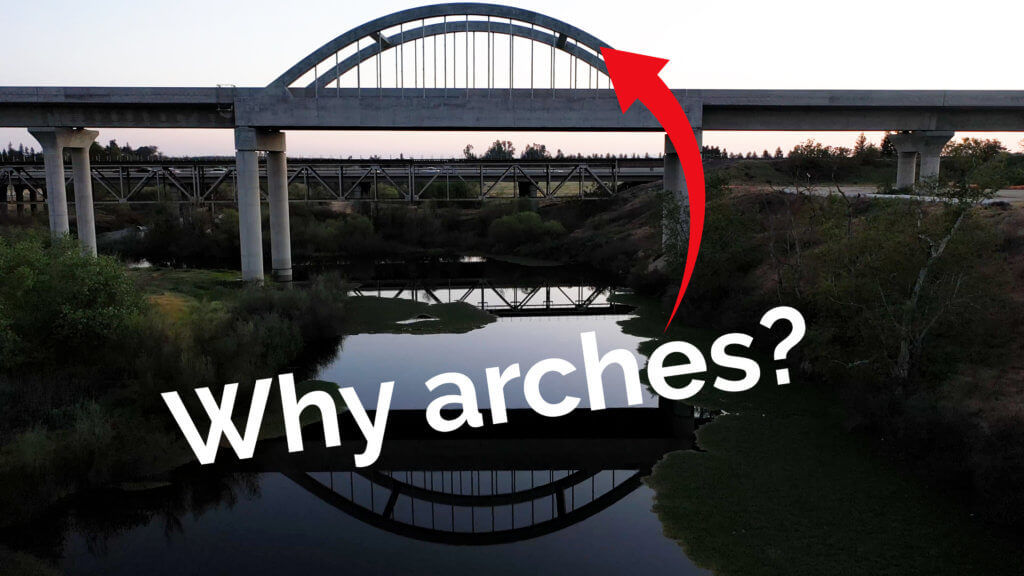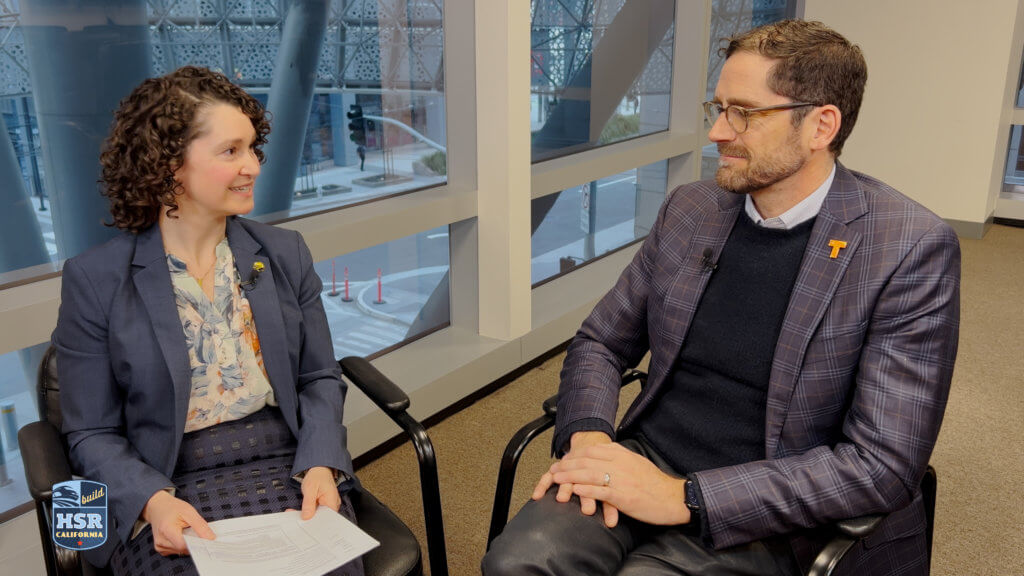Winter 2023 Quarterly Newsletter
|
Statewide News |
Northern California |
Southern California |
California High-Speed Rail Project Creates 10,000 Jobs
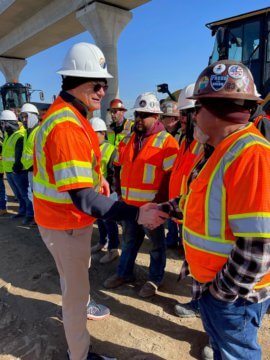 On February 14, the high-speed rail program achieved a historic milestone. Since the start of construction, the high-speed rail project has created more than 10,000 construction jobs, with most of these jobs going to Central Valley residents and men and women from disadvantaged communities.
On February 14, the high-speed rail program achieved a historic milestone. Since the start of construction, the high-speed rail project has created more than 10,000 construction jobs, with most of these jobs going to Central Valley residents and men and women from disadvantaged communities.
The success of this project is owed in large part to the hard-working women and men who are building the bridges, overpasses and structures that will carry the nation’s first high-speed trains,” said Authority CEO Brian Kelly. “These jobs are good-paying union jobs that have allowed individuals from all backgrounds to stay local and thrive. Their stories and personal commitment to the hard work keep us moving in the right direction. We are truly appreciative for their efforts.”
Workers and students from the Central Valley Training Center stood behind special guests including US Department of Transportation Assistant Deputy Secretary Charles Small and Federal Railroad Administration Administrator Amit Bose, California State Transportation Secretary Toks Omishakin, Fresno Mayor Jerry Dyer and local building trades representative Chuck Riojas. You can watch a recap of the event here.
The Authority is proud to work alongside such skilled laborers including electricians, cement masons, steel workers and others who are helping bring the nation’s first high-speed rail system to life while contributing to the local economy across five Central Valley counties.
VIDEO – Girder Facility Cranks Out Huge Concrete Building Blocks for High-Speed Rail in Valley
Since 2018, the Dragados Flatiron Joint Venture Pre-Cast Concrete Girder facility, smack in the middle of Construction Package 2-3, has been manufacturing crucial and massive concrete girders to keep high-speed rail’s route flat and fast over tons of different obstacles throughout the Valley. This is the largest single job facility of its kind in the whole state. And given its location next to the Hanford Viaduct, which will require over 900 such girders, and the fact it mixes its own concrete on site, the facility is incredibly efficient. The facility will eventually put out more than 2,300 girders re various dimensions, and more than half a million concrete deck panels. Watch the video to learn more about this site unlike any other in California.
Celebrating Black History Month at High-Speed Rail
 Last month was Black History Month, and the Authority celebrated the occasion by featuring staff on social media. We asked Authority staff members and CalSTA Secretary Toks Omishakin what Black History Month means to them and received some extremely thoughtful answers on the hardships, contributions, and legacies of Black Americans historically through to present day. Hear Secretary Omishakin, Special Projects Manager Korey Landry and Document Control Records Manager Kevin Griffin’s thoughts on YouTube. You can also read Chief Program Officer Bruce Armistead and Program Delivery Deputy Chief of Staff Zerlinia Moore thoughts on social media.
Last month was Black History Month, and the Authority celebrated the occasion by featuring staff on social media. We asked Authority staff members and CalSTA Secretary Toks Omishakin what Black History Month means to them and received some extremely thoughtful answers on the hardships, contributions, and legacies of Black Americans historically through to present day. Hear Secretary Omishakin, Special Projects Manager Korey Landry and Document Control Records Manager Kevin Griffin’s thoughts on YouTube. You can also read Chief Program Officer Bruce Armistead and Program Delivery Deputy Chief of Staff Zerlinia Moore thoughts on social media.
ICYMI – Why Does California High-Speed Rail Use Arch Bridges?
In January, we released a video from the Cedar Viaduct as the Authority exploring the importance and purpose of arches on our signature high-speed rail structures. Dating back thousands of years, arch bridges were commonly built by stone or brick. Today, arches are constructed from concrete, as can be seen on both the Cedar Viaduct and the nearby San Joaquin River Viaduct located off State Route 99 in Fresno and Madera counties. Learn more about these fierce gravity fighting machines!
To stay up to date with the Authority, follow our Twitter, Facebook, Instagram and LinkedIn pages.
| NORTHERN CALIFORNIA NEWS |
A Conversation with TJPA Executive Director Adam Van de Water
California High-Speed Rail Authority Northern California Regional Director Morgan Galli and Transbay Joint Powers Authority Executive Director Adam Van de Water to discuss The Portal and the long-range vision for the Transbay Program.
The Authority is a partner with TJPA to deliver The Portal with the goal of providing mobility and connectivity benefits for the region, including improved access to transportation and economic opportunities.
What’s Happening in Northern California
 The Portal – Uniting the Bay, Connecting California
The Portal – Uniting the Bay, Connecting California
Last December, the Transbay Joint Powers Authority (TJPA) Board voted to rebrand the Downtown Extension (DTX) as “The Portal” with the tagline “Uniting the Bay. Connecting California.” The project will extend Caltrain commuter rail from its current terminus at 4th and King streets and deliver future high-speed rail service to the train box found beneath the Salesforce Transit Center.
The Rebranding Plan process began in Spring 2021 and used an insights-based design and discovery process to obtain information on the public’s familiarity with the project and the DTX name. This first phase of the effort consisted of an online survey in five counties (Santa Clara, San Mateo, San Francisco, Alameda and Contra Costa) and listening sessions with interest groups and organizations.
The second phase of the Rebranding Plan process, which commenced in Spring 2022, was design of a new name with mark and tagline for the project. The TJPA focused on the project’s benefits and identified factors critical to the Bay Area’s diverse communities.
With the support and engagement of its partners, the TJPA is developing Phase 2 of the Transbay Program, which includes the design and construction of the 1.3-mile rail extension. Principally constructed below grade underneath Townsend and Second streets, the project consists of an underground station at Fourth and Townsend streets, emergency exit and ventilation structures, utility relocation, and rail systems along the alignment.
The environmentally cleared project is currently in the design phase. The TJPA expects to advance into the engineering phase, along with utility relocation and early pre-construction work, in the coming year.
The TJPA is actively working at the local, regional, state, and federal levels to complete the funding plan for the project that will deliver mobility and connectivity benefits for the region and the state.
Caltrain Electrification Update
 Caltrain Electrification construction continues between the 4th and King Station in San Francisco and Tamien Station in San Jose. Construction activities include signal installation and testing, Overhead Contact System installation, and electric train testing. The project will improve the customer experience by increasing the number of trains, modernizing service, and adding new safety elements. Electrification will help meet ambitious regional and state climate action goals and supply the framework for high-speed rail on the corridor.
Caltrain Electrification construction continues between the 4th and King Station in San Francisco and Tamien Station in San Jose. Construction activities include signal installation and testing, Overhead Contact System installation, and electric train testing. The project will improve the customer experience by increasing the number of trains, modernizing service, and adding new safety elements. Electrification will help meet ambitious regional and state climate action goals and supply the framework for high-speed rail on the corridor.
In order to limit the impact on regular train service. Caltrain will perform work during the day and at night between 8 p.m. and 6 a.m. Weekend shutdowns are also planned in 2023 to complete construction and perform the required testing.
The first phase of weekend shutdowns began with San Francisco to Millbrae in February. Between San Jose/Tamien and Millbrae stations, trains will make all weekend local stops. Passengers traveling to and from San Francisco should use alternative transportation, including timed BART transfers at Millbrae. A Lifeline bus bridge and on-call paratransit service will also be available.
For more additional information about construction activities and signing up for updates, visit Caltrain’s Construction webpage.
Mineta Transportation Leader Chips Away at California’s Car Culture
 High-speed rail represents a massive change in California’s culture. It’s not just about taking people quickly from place to place. High-speed rail is changing communities and the way people live.
High-speed rail represents a massive change in California’s culture. It’s not just about taking people quickly from place to place. High-speed rail is changing communities and the way people live.
Nobody knows that better than Dr. Karen Philbrick, the executive director of the Mineta Transportation Institute (MTI) at San José State University. Philbrick talks about the commercial activity around Union Station in Washington DC, the subway stops built under Boston Common or the historic State House. And don’t get her started on how rail has built the great cities of Europe; even Uzbekistan’s 400-mile line is wildly popular and has seen developers rush to build housing and retail outlets near stations.
“I think they are a great community hub, particularly if you have strong transit-oriented development,” Philbrick said. “So condos or other vertical development, with cute places to shop and good restaurants. Definitely, they can serve as a mobility hub, and it also, of course, stimulates economic development.”
The thing is, most Americans haven’t seen that kind of effect. There’s a strong rail corridor from Boston to Washington, but most Californians haven’t taken one of the frequent commuter lines into New York’s Grand Central Station.
But change is coming. California’s High-Speed Rail Authority will be running a train in the Central Valley before the end of the decade. Cities like Merced plan to transform their downtowns, with a new train station the centerpiece of it all.
The key, Philbrick says, is the connections these stations provide. Merced’s stop will connect to local rail lines, bus options and bike lanes. San Jose’s Diridon Station and San Francisco’s Salesforce Transit Center are slated to become hubs of public transit. High-speed rail will do the heavy-lifting for getting people between cities while the local lines will take people where they need to go. No cars needed.
”When you’re talking about public transit, research shows people are unwilling to walk more than a quarter of a mile or half a mile to reach a stop,” Philbrick said, “so you need strong first- and last-mile connections, to get people onto the system.”
What doesn’t work is adding more highway lanes, Philbrick said. More lanes bring more vehicle traffic, more pollution and the same gridlock. The car-driving dream of Californians is to be the only driver on a coastal highway on a sunny day. The reality is often anything but that.
Philbrick and the MTI have partnered with the Authority to alter that California dream. The MTI has brought high school students to high-speed rail building sites to show teens what is coming soon to a transit hub near them.
“We’ve been a distinctly car-heavy culture for years,” Philbrick said. “The American dream used to be you turned 16, got a car, and had access to free living. Public transit was considered for people of lower status instead of a wonderful mobility option.”
Engineering Strong Partnerships
 Strong partnerships are critical to the success of large infrastructure projects. Contractors, architects and engineers must work together to ensure successful delivery.
Strong partnerships are critical to the success of large infrastructure projects. Contractors, architects and engineers must work together to ensure successful delivery.
An excellent example of a strong partner is Oakland-based VST Engineering. A certified Small Business/Disadvantaged Business Enterprise, the firm specializes in railway, highway & roadway, structural and general civil design for the transportation sector.
Founded by three engineers, VST Engineering has an inspiring origin story. “Back in 2011, I was out in Utah on the I-15 CORE design-build,” said Chief Sales & Marketing Officer Dominic Tafoya. “As the project wrapped up, I expressed interest in going to California, and a colleague told me a couple of his coworkers were looking to transfer from Sacramento to Oakland.” At the time, little did Tafoya know that the two transferring were his future business partners, Anthony Valdiosera and Michael Stanwick, now VST’s Chief Executive Officer and Chief Operations Officer, respectively. Tafoya was hired for one of the roles and moved to Sacramento. “I ended up picking up a couple of their projects and only talked to them on the phone once or twice,” said Tafoya.
The following year, Tafoya’s colleague brought the trio together again. “I took an interview in San Francisco and little did I know, Michael and Anthony also interviewed. We each accepted offers and met in person for the first time our first week in the office,” said Tafoya. “None of us could resist the prospect of performing preliminary design for California High-Speed Rail.”
Valdiosera and Stanwick focused on railway design for the next few years, while Tafoya worked on road and highway design. “We ended up collaborating, working long nights to meet deadlines,” said Stanwick, “when we would look around the office late at night, it would often just be the three of us.”
“We talked off and on about starting our own business, our desire to create something special,” said Valdiosera. Careers took them on separate paths before they could make the business a reality. Valdiosera kept the dream in sight, and as the transportation industry entered a period of growth, he reconnected with Stanwick, and they both approached Tafoya to formalize the partnership. “Then finally, in 2018, we said let’s go for it, let’s do it, and we turned on the lights and hit the ground running,” said Tafoya.
“We had the classic startup story, starting in my garage,” said Valdiosera. Since then, the co-founders attribute much growth to the California High-Speed Rail Authority. In 2019, VST Engineering joined the Rail Delivery Partner team, providing technical engineering support in the Central Valley. “We reported to each of the Construction Package project offices and made ourselves available to resolve any technical issues impeding design approvals,” said Valdiosera. The hard work resulted in a measured increase in construction activity, which led the Authority to turn to VST for additional support within the Engineering Services Branch. Today, the company has 13 employees and has relocated from the garage to its new headquarters in Oakland.
“We’re building a full-service civil engineering firm and look forward to continuing our partnership with California High-Speed Rail,” said Stanwick. “As we expand, our goal of connecting and advocating for our communities will continue to drive the quality of our services.”
Frequently Asked Questions
Northern California high-speed rail staff respond to many inquiries from residents, local agencies, neighborhood groups and other stakeholders. Below are answers to some of the more common questions about the program.
How affordable will it be to travel on high-speed rail?
For current planning purposes, the Authority expects pricing to be competitive with other modes of travel, including car and airline travel. Future ticket prices are assumed to be roughly 80% of the cost of a regular plane ticket. The future train operator will ultimately set prices and may incorporate service class, time of day, distance, frequency of use, and other fare policy measures typically seen in the airline and transit industry today. Please see the Service Planning Methodology document for a summary of the service assumptions used for the 2022 Business
Have any questions for the NorCal team? Please submit them to us at northern.calfornia@hsr.ca.gov.
Upcoming Events in Northern California
Here are upcoming events in Northern California that you won’t want to miss!
Mission Community Market
March 23
3 p.m. – 7 p.m.
Authority staff will be at the Mission Community Market. Stop by to stock up on fresh produce and talk with us about high-speed rail. Click here for more information.
Los Banos Downtown Spring Street Faire
April 15
9 a.m. – 3 p.m.
Authority staff will be at the Los Banos Downtown Spring Street Faire. The event features arts & crafts, live entertainment, great food and a kid’s area with pony rides! Click here for more information.
Earth Day San Francisco
April 22
9 a.m. – 6 p.m.
Authority staff will be at Earth Day SF. The event features speakers and a selection of vendors and sponsors focused on sustainability. View transit options in the Green Mobility Zone and enjoy live music while celebrating environmental awareness. Click here for more information.
Benicia Farmers Market
May 18
4 p.m. – 8 p.m.
Authority staff will be at the Gilroy Farmers Market. Stop by to stock up on fresh produce and talk with us about high-speed rail. Click here for more information.
Viva Calle San Jose
June 11
This free program temporarily closes miles of San José streets to bring communities together to walk, bike, skate, play and explore the city. Click here for more information.
| SOUTHERN CALIFORNIA NEWS |
LaDonna’s Corner
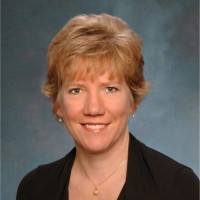
Hello, I’m Southern California Regional Director LaDonna DiCamillo and I’m delighted to share plans for continuing progress this year in Southern California on Phase I of the statewide California High-Speed Rail Authority (Authority) system.
Our work to deliver a clean, fast, and safe transportation network for all Californians continues in 2023 with the anticipated release of the Final Environmental Impact Report/Environmental Impact Statement (FEIR/FEIS) for the more than 30-mile segment between Palmdale and Burbank, and the release of the Draft Environmental Impact Report/Environmental Impact Statement (DEIR/DEIS) for the approximately 30-mile Los Angeles to Anaheim project section. The completion of these documents underscores statewide momentum on environmental clearance in the 500-mile Phase 1 system between the Bay Area and Los Angeles/Anaheim.
Vision and planning will play key roles as the Authority works to develop stations. Station planning continues with the cities of Palmdale and Burbank to create unique transportation experiences for future high-speed rail travelers with a connection in Palmdale to the Brightline West proposed high-speed rail route to Las Vegas, and a plane-to-train connection at the Hollywood Burbank Airport. Our vision is that high-speed rail stations will serve as more than just a train stop, they will transform cities, create community hubs and be iconic of the state.
The team is considering grant opportunities to help support station planning in the City of Palmdale, which includes the creation of a multimodal transportation hub to connect high-speed rail, Metrolink, Brightline West, Amtrak and future light rail, as well as Greyhound bus services and other local transit options.
Outreach efforts continue with stakeholders in business, education and project section communities in the Palmdale to Burbank and Los Angeles to Anaheim project sections and throughout Southern California. We will continue to bring the message and hope for a future of clean transportation to Southern California. Stay tuned!
High-Speed Rail: Planning for You and the Future
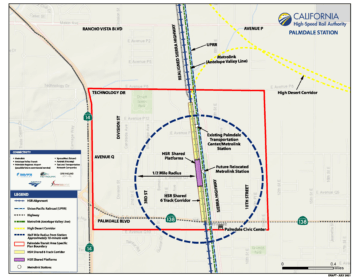 The start of a new year is often accompanied by new goals, resolutions, cliches, and for those of us based in Los Angeles – the playoff eliminations of our NFL teams. While certain Los Angeles-based teams had their year come to a sudden end in January, the California High-Speed Rail Authority’s (Authority) Southern California Region team continues their hard work preparing for another important year in the pursuit of bringing high-speed rail to our fellow Californians.
The start of a new year is often accompanied by new goals, resolutions, cliches, and for those of us based in Los Angeles – the playoff eliminations of our NFL teams. While certain Los Angeles-based teams had their year come to a sudden end in January, the California High-Speed Rail Authority’s (Authority) Southern California Region team continues their hard work preparing for another important year in the pursuit of bringing high-speed rail to our fellow Californians.
Although construction on the project in Southern California is some time away, we’re looking ahead – and working towards – station planning and design in the region. Let’s look at the City of Palmdale and what residents in the Antelope Valley can expect.
The Palmdale Transportation Center (PTC) is a multi-modal transportation center featuring a Metrolink rail station, connecting Antelope Valley residents to downtown Los Angeles and beyond. The PTC is home to a local and commuter bus hub with the potential to connect with the proposed Brightline West high-speed rail service to Las Vegas, Nevada. To accommodate California High-Speed Rail, the PTC would be relocated just south of its current location and would see an expansion, while continuing to feature Metrolink and Antelope Valley Transit Authority services. Future connectivity with Brightline West, long-distance bus services, and the Palmdale Regional Airport are also being explored as additional transit options at the Palmdale Station, making it the main transportation hub of the Antelope Valley.
“Collaboration with other transportation partners is critical for the success of the Palmdale Station, and what makes the process so exciting!”, said the Authority’s Deputy Director of Planning and Sustainability Karl Fielding. “While coordinating with several entities and their various initiatives is complicated, it is essential to ensure all station components work together and deliver community benefits in one co-located facility in Palmdale.”
The proposed multi-modal connectivity at the Palmdale Station aligns with the Authority’s station design and planning philosophy. The Authority’s goal is for its stations to not only invite local economic development and drive the creation of a 15-minute neighborhood – areas of focused development accessible within 15 minutes on foot – but also maximize and prioritize public space and amenities. The Authority actively engages with station cities, and local and regional transit providers, to ensure that stations are being designed to allow pedestrian access regardless if you choose to walk or ride your bike or scooter. Zero and low-emission transportation options to and from our stations not only help the local environment but also reinforce the potential for the high-speed rail system to reduce vehicle miles traveled and provide first-mile/last-mile access within the station district.
There is much to look forward to in the years to come with California High-Speed Rail. As construction forges ahead in the Central Valley, the Authority will continue to partner with station communities throughout the 500-mile alignment and ensure their own stations are designed to fit with their community’s needs, goals, and interests.
Building Lifelong Relationships with Southern California Schools
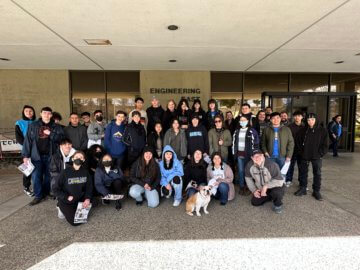 The outreach team in the California High-Speed Rail Authority’s (Authority) Southern California region is riding a wave of enthusiasm into 2023. The team connected, virtually and in-person, with more than 1,200 students last year sharing information about nation’s first high-speed rail project and the career opportunities it’s creating in the 21st century.
The outreach team in the California High-Speed Rail Authority’s (Authority) Southern California region is riding a wave of enthusiasm into 2023. The team connected, virtually and in-person, with more than 1,200 students last year sharing information about nation’s first high-speed rail project and the career opportunities it’s creating in the 21st century.
Recently, members of the outreach team led 40 Career Technical Educational (CTE) students from Azusa, Charter Oak and Monrovia high schools on a field trip to the Authority’s active construction sites in Central Valley.
The students who took part in this unique opportunity were able see the transformative project taking shape, while achieving a greater understanding of the statewide project and learning of potential career opportunities with high-speed rail. The two-day field trip also included a visit to the Lyles College of Engineering at California State University, Fresno, and informative discussion with current and former engineering students.
“This opportunity for students is going to be impactful in so many ways,” said Azusa High School CTE Coordinator Patricia Dorsey. “Students were able to see the technical skills they’re learning in the classroom applied in a way that we could never replicate. Giving students exposure to all the opportunities available in a statewide project such as the California High-Speed Rail will build their confidence to pursue their goals.”
The Southern California outreach team is looking forward to connecting with more local students this year as part of the Authority’s I Will Ride program. Additionally, keep an eye out for team members staffing a High-Speed Rail booth at upcoming events throughout the Southern California region in 2023.
Finding “Joy” in Engineering
 The California High-Speed Rail Authority’s (Authority) Southern California region is looking to progress towards completing the project’s two remaining environmental documents in the next couple of years. This advancement includes the Draft Environmental Impact Report (DEIR) for the Los Angeles to Anaheim (LA-A) section.
The California High-Speed Rail Authority’s (Authority) Southern California region is looking to progress towards completing the project’s two remaining environmental documents in the next couple of years. This advancement includes the Draft Environmental Impact Report (DEIR) for the Los Angeles to Anaheim (LA-A) section.
Leading the charge as the Project Manager over this final environmental hurdle for LA-A is Joy Pinne, who brings nearly 30 years of engineering experience to the role. Engineers like Pinne play a vital role in the development in the nation’s first high-speed rail system.
As a Regional Delivery Manager within the Authority’s Office of Strategic Delivery, Pinne is responsible for the successful delivery of Environmental Clearance for the project sections that she is assigned. Environmental Clearance is obtained with a Record of Decision (State approval)/Notice of Determination (Federal approval) on an environmental document that identifies the project’s impacts.
“I have always been intrigued with technology and have an interest in preserving the environment for our future generations,” said Pinne. “The thought of working on such a transformative project that would benefit the people of California by providing an alternative way to travel efficiently using sustainable green technology, drew me to working at the Authority.”
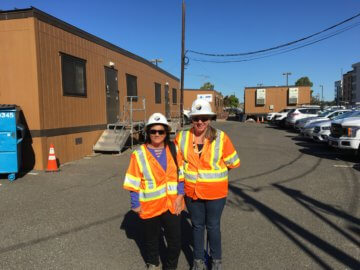 After graduating from California State University, Chico with a degree in Civil Engineering, Pinne began a career with the State of California the following May. Pinne worked her way through the engineering ranks in her more than 22 years with the California Department of Transportation (Caltrans). Throughout her career she spent a lot of time in the field inspecting construction projects before becoming one of the few Caltrans engineers to work with a world-wide consortium on the National Automated Highway System Demonstration in the median of Interstate-15 in San Diego. Pinne also served as the statewide construction safety coordinator and a project manager in Caltrans’ District 10 before joining the Authority in 2016.
After graduating from California State University, Chico with a degree in Civil Engineering, Pinne began a career with the State of California the following May. Pinne worked her way through the engineering ranks in her more than 22 years with the California Department of Transportation (Caltrans). Throughout her career she spent a lot of time in the field inspecting construction projects before becoming one of the few Caltrans engineers to work with a world-wide consortium on the National Automated Highway System Demonstration in the median of Interstate-15 in San Diego. Pinne also served as the statewide construction safety coordinator and a project manager in Caltrans’ District 10 before joining the Authority in 2016.
While female engineers may still be the minority in the field, there are many women like Pinne who have become very successful in the industry.
“My best advice is to keep your eye on your goal and never give up,” Pinne added. “Engineering, especially civil engineering in the transportation world, is really a great and fulfilling career choice. There are a lot of opportunities in today’s world which can provide a mix of office and field work, depending on what you prefer.”
It is never too early to find “Joy” in an engineering career. As part of Engineering Week, February 23 was Introduce a Girl to Engineering Day. This growing movement was designed to inspire girls’ futures, so they learn they have a place in engineering a better world.
Drilling Down in the Central Valley
 1985, the year of the memorable Chicago Bears defense, the release of the first-ever PC Windows operating system, and the year the world would see the debuts of some superstars, like Jerry Rice, Mike Tyson and Whitney Houston. Surely, there must have been something in the water that year. John Gregg, then an Engineering Geologist working in California, got a sip of it.
1985, the year of the memorable Chicago Bears defense, the release of the first-ever PC Windows operating system, and the year the world would see the debuts of some superstars, like Jerry Rice, Mike Tyson and Whitney Houston. Surely, there must have been something in the water that year. John Gregg, then an Engineering Geologist working in California, got a sip of it.
Based in both Southern and Northern regions of California, the 100% Native American owned Gregg Drilling (Gregg) has been serving the Golden State for nearly four decades. Over the last 38 years, the federal and state certified disadvantaged business has also worked on projects with key transportation agencies within the state, such as Caltrans, Metro and BART.
“Gregg Drilling was established in 1985 to serve the environmental drilling industry as a safe and reliable option to site investigation services,” says Gregg Drilling Technical Director Kelly Cabal. Since its inception, Gregg has become widely recognized as a leader and innovator in subsurface investigation – tapping into geotechnical and marine site investigations over the years.
With a client list consisting of government agencies, industrial owners, engineering consulting firms and construction firms, Gregg prides itself on excellent service, efficient performance and a high standard of safety.
“Working in the regulatory environment present in California is always a challenge,” says Cabal. “Many of Gregg’s projects require specialized training and certifications to access refineries, military bases and environmentally sensitive sites.”
When it comes to its role on the nation’s first high-speed rail project, Gregg began its investigation services in 2016 working with various clients as part of Construction Package 2-3 in the Central Valley. “Most of the work has involved cone penetration testing (CPT), where a small electronic probe is pushed into the ground to determine the strength properties of the soil,” Cabal said. Gregg provides this crucial data to assist the engineers and designers with liquefaction analysis and foundation design.
The work didn’t stop there. In 2018, Pitcher Services, Gregg’s sister company, started providing investigation services on the project as well. Pitcher Services specializes in geotechnical site investigations and working with AECOM and Jacobs; they’ve drilled 200 borings for high-speed rail, ranging between 30 and 500 feet.
Deeper borings involve geotechnical sampling and downhole suspension logging, processes used to assess the properties of the soil for foundation design. Gregg and Pitcher have also installed monitoring wells to analyze groundwater and test for contamination. Together, these processes, as part of Gregg and Pitcher’s site investigations, are crucial to assist design-build contractors with foundation design and earthquake liquefaction mitigation data points.
To date, 95% of Gregg’s drilling has been completed with just a few monitoring wells and borings remaining at various site investigations along the alignment from Fresno to Tulare County. Gregg hopes to continue their work on the project as additional sections along the alignment are released. Cabal adds, “We are proud to contribute to this important green project in California, reducing greenhouse gasses and promoting public transport and access across our beautiful state.”
 Beyond the nation’s first high-speed rail project, Gregg will continue to provide their site investigation expertise to the western United States on land and in deep waters. Purchased by Sealaska in 2018, Cabal says Gregg is excited to have aligned with a company with the same values of “For People, For Planet”, a partnership that has led to site investigations for offshore wind solutions to assist with the expansion of ports, harbors and existing transmission infrastructure.
Beyond the nation’s first high-speed rail project, Gregg will continue to provide their site investigation expertise to the western United States on land and in deep waters. Purchased by Sealaska in 2018, Cabal says Gregg is excited to have aligned with a company with the same values of “For People, For Planet”, a partnership that has led to site investigations for offshore wind solutions to assist with the expansion of ports, harbors and existing transmission infrastructure.
Gregg is positioned to grow and continue to provide the best site investigations worldwide. Cabal states, “[We] will be able to use this project as a reference for work and contracts demonstrating our ability to comply with strict safety requirements and handle larger mega-projects”.
Gregg looks forward to a future where they are part of the solution to our climate crisis through positive improvements in energy infrastructure and the green economy. Their 38-year presence in the industry is not a result of luck or a sip of water in 1985, but their commitment to exceeding the standard they’ve set in the drilling industry, along with the relentless pursuit of one simple goal: to provide clients with high-quality, innovative services performed in a safe, timely and cost-effective manner.
Frequently Asked Questions
Southern California high-speed rail staff respond to many inquiries from residents, local agencies, neighborhood groups and other stakeholders. Below are answers to some of the more common questions about the program.
The draft EIR/S for Palmdale to Burbank was released late last year. What are the next steps and when do you expect a final EIR/S?
The Authority released the draft EIR/S for Palmdale to Burbank in September 2022, which evaluated the impacts and benefits of six build alternatives along the 31-to-38-mile project section. The preferred alternative would avoid crossing Una Lake and minimizes impacts to nearby wetlands.
Following the release of the draft EIR/S, the public and stakeholders had the opportunity to submit public comments over a 90-day review period which concluded on December 1st, 2022. Currently, staff are evaluating public comments received during the review period and are working on responses to the comments which will be included in the Final EIR/S. After the Final EIR/S has been issued later this year, Staff will present the Final EIR/EIS to the Authority Board of Directors to consider certification and project approval under the California Environmental Quality Act (CEQA) and National Environmental Policy Act (NEPA).
The Final EIR/S for the Palmdale to Burbank project section is expected to be released in Fall 2023.
What is happening with regards to station planning around Palmdale and what are the next steps?
The Authority is actively working with the City of Palmdale on planning for the future high-speed rail station in the city, which will be about 0.5 miles south of the existing Palmdale Transportation Center (PTC). This new station location will include the relocation of Metrolink service and facilities to support high-speed rail service to Las Vegas via the High Desert Corridor. This station is featured in the city’s Palmdale Transit Area Specific Plan (PTASP) as well as the ‘Palmdale 2045’ General Plan, which was approved in 2022. The PTASP, which was approved in 2020 and amended in 2022, focuses on land use changes and infrastructure improvements around the future Palmdale High-Speed Rail Station and provides a strong foundation on which to prioritize implementation activities for station infrastructure and supportive developments.
Since June 2022, the Authority has been actively participating in virtual and in-person Station Implementation Workshops, which utilize the PTASP and other city work as the foundation for collaborating on and co-creating the vision for an integrated Station Master Plan for the future Palmdale Station. The workshops are vital to the station planning process in Palmdale and are conducted to refine the Master Plan vision and implementation governance with city officials.
Moving forward, the Authority will hold additional workshops this year and will focus on prioritizing the components of the master plan, exploring options for a governance agreement, and actively seeking funding for the Palmdale Station Master Plan.
Have any questions for the SoCal team? Please submit them to us at southern.calfornia@hsr.ca.gov.
Quarterly Newsletter Archive
- Spring 2023 All Aboard Newsletter
- Winter 2023 Quarterly Newsletter
- Fall 2022 Quarterly Newsletter
- Summer 2022 Quarterly Newsletter
- Spring 2022 Quarterly Newsletter
- Winter 2022 Quarterly Newsletter
- Fall 2021 Quarterly Newsletter
- Summer 2021 Quarterly Newsletter
- Regional Newsletter - May 2021
- Regional Newsletter - February 2021
- Regional Newsletter - November 2020
- Regional Newsletter - August 2020
- Regional Newsletter - June 2020
- Regional Newsletter - February 2020
- Regional Newsletter - November 2019
- Regional Newsletter - August 2019
The California High-Speed Rail Authority makes every effort to ensure the website and its contents meet mandated ADA requirements as per the California State mandated Web Content Accessibility Guidelines 2.0 Level AA standard. If you are looking for a particular document not located on the California High-Speed Rail Authority website, you may make a request for the document under the Public Records Act through the Public Records Act page. If you have any questions about the website or its contents, please contact the Authority at info@hsr.ca.gov.



